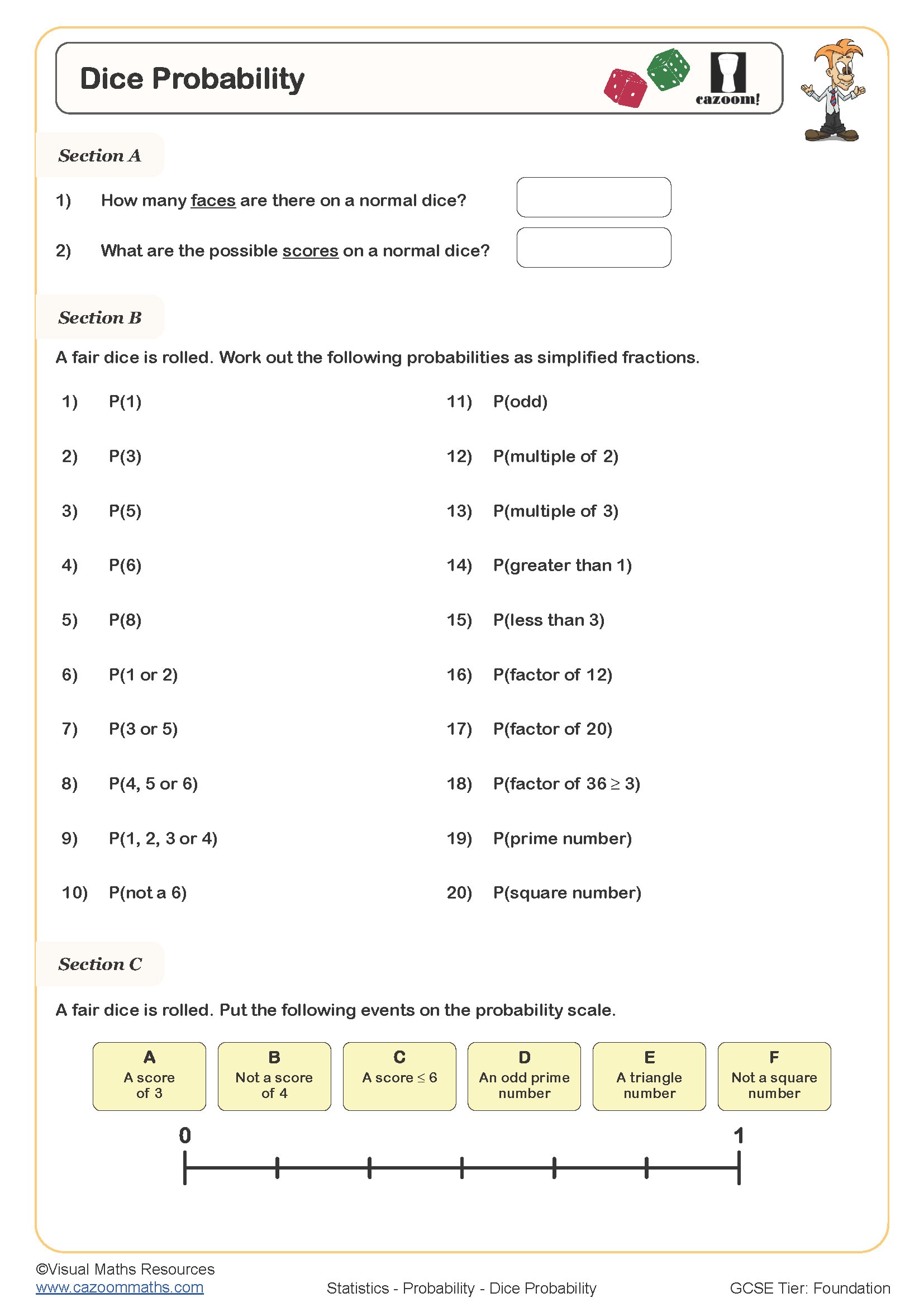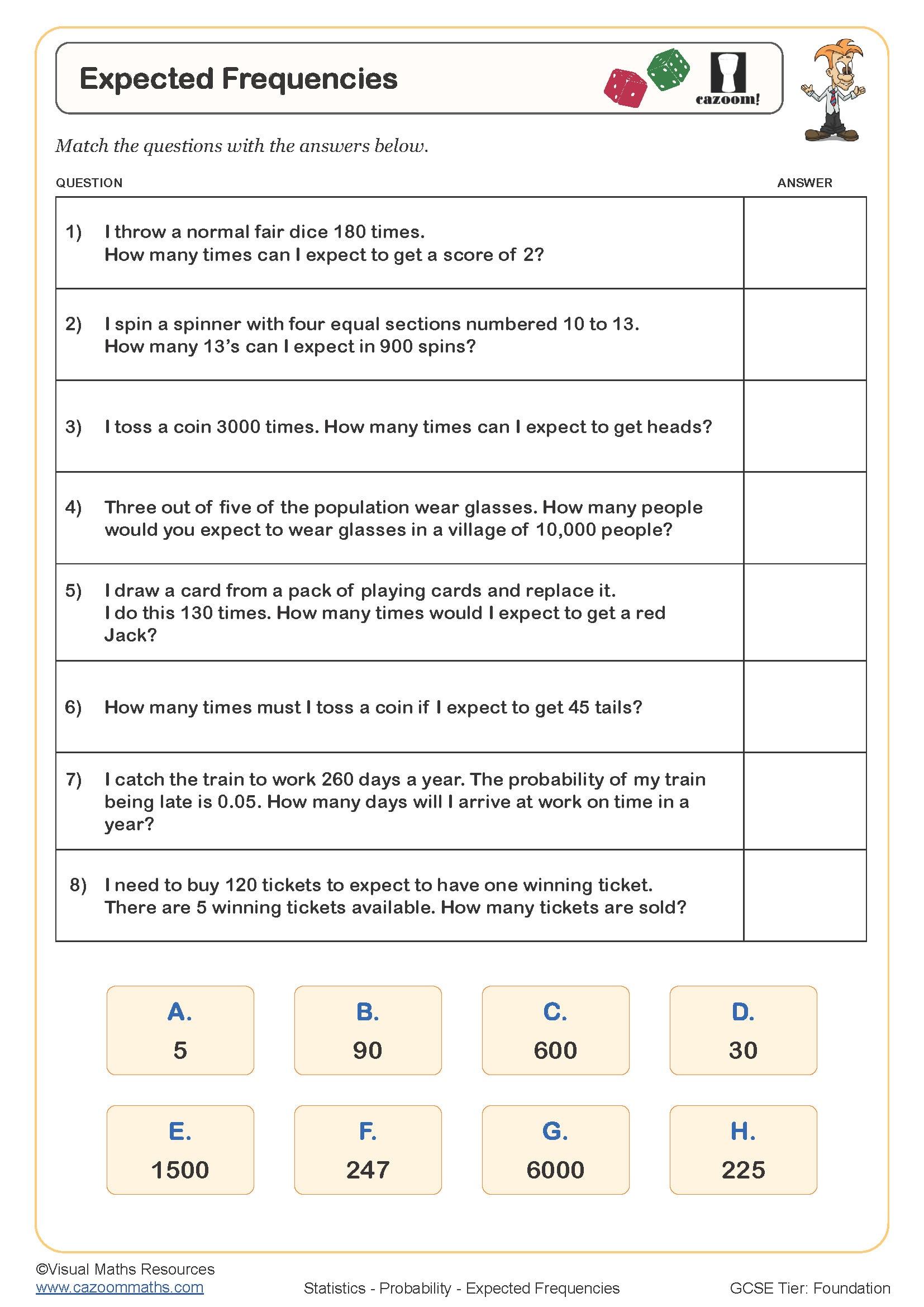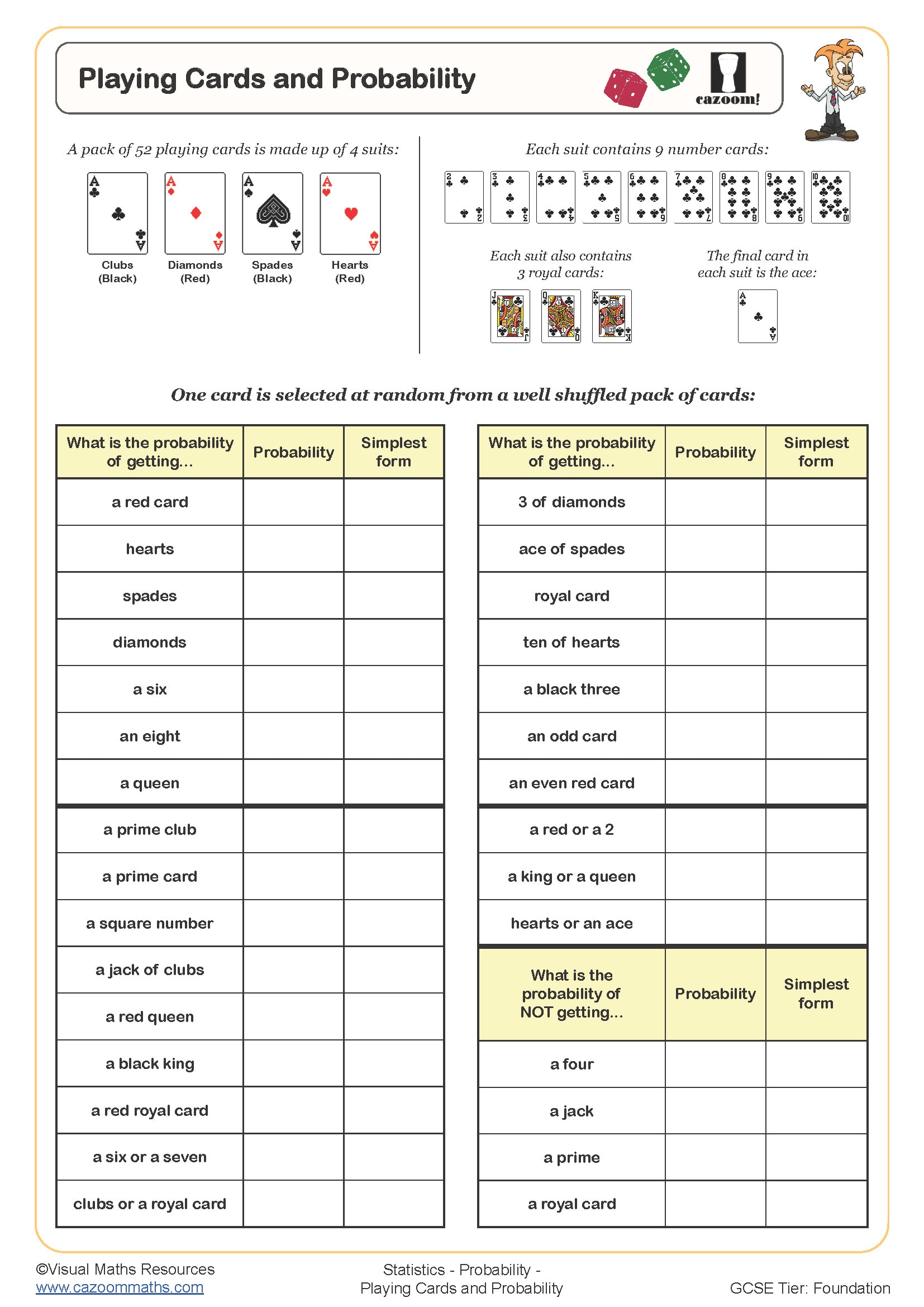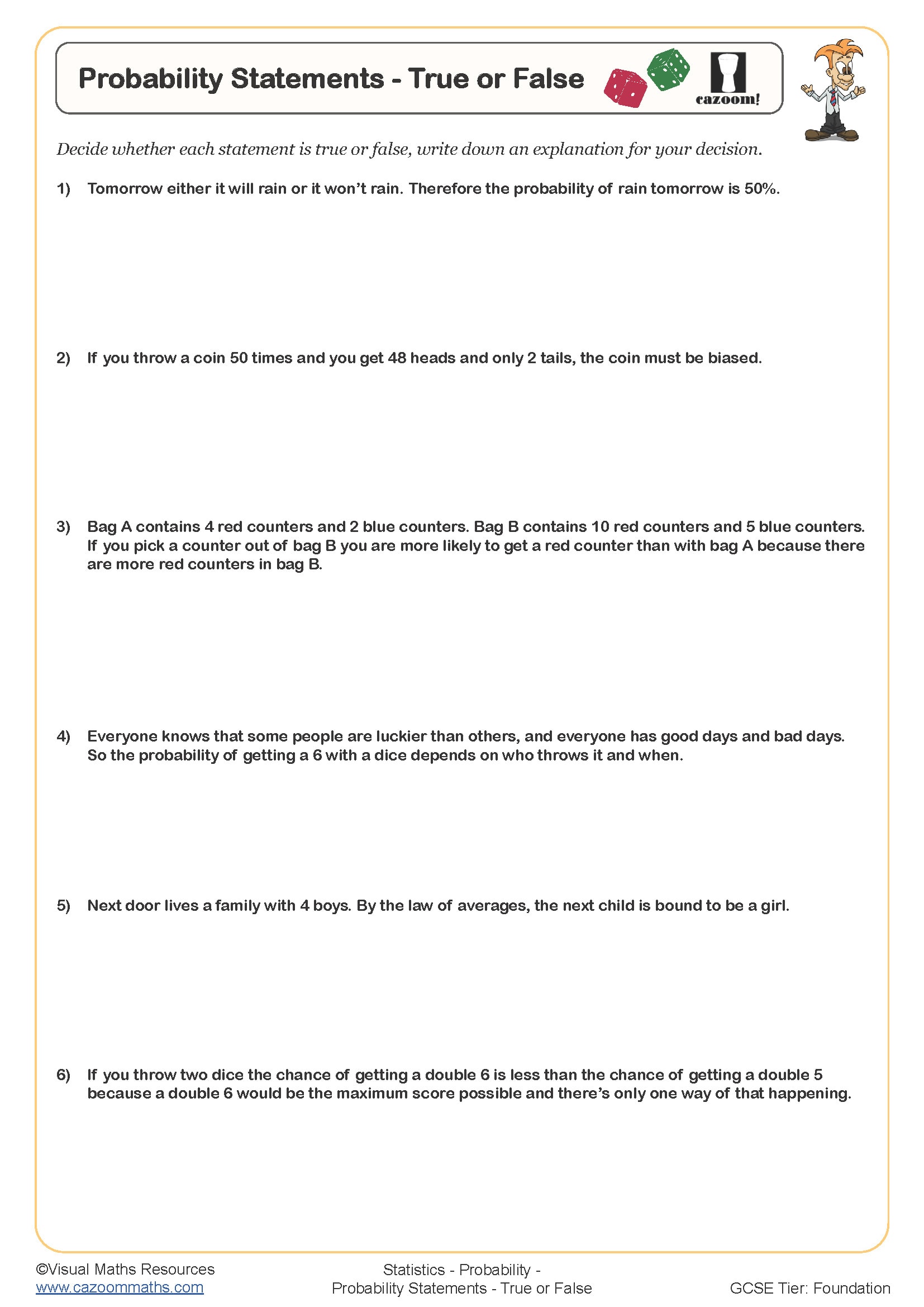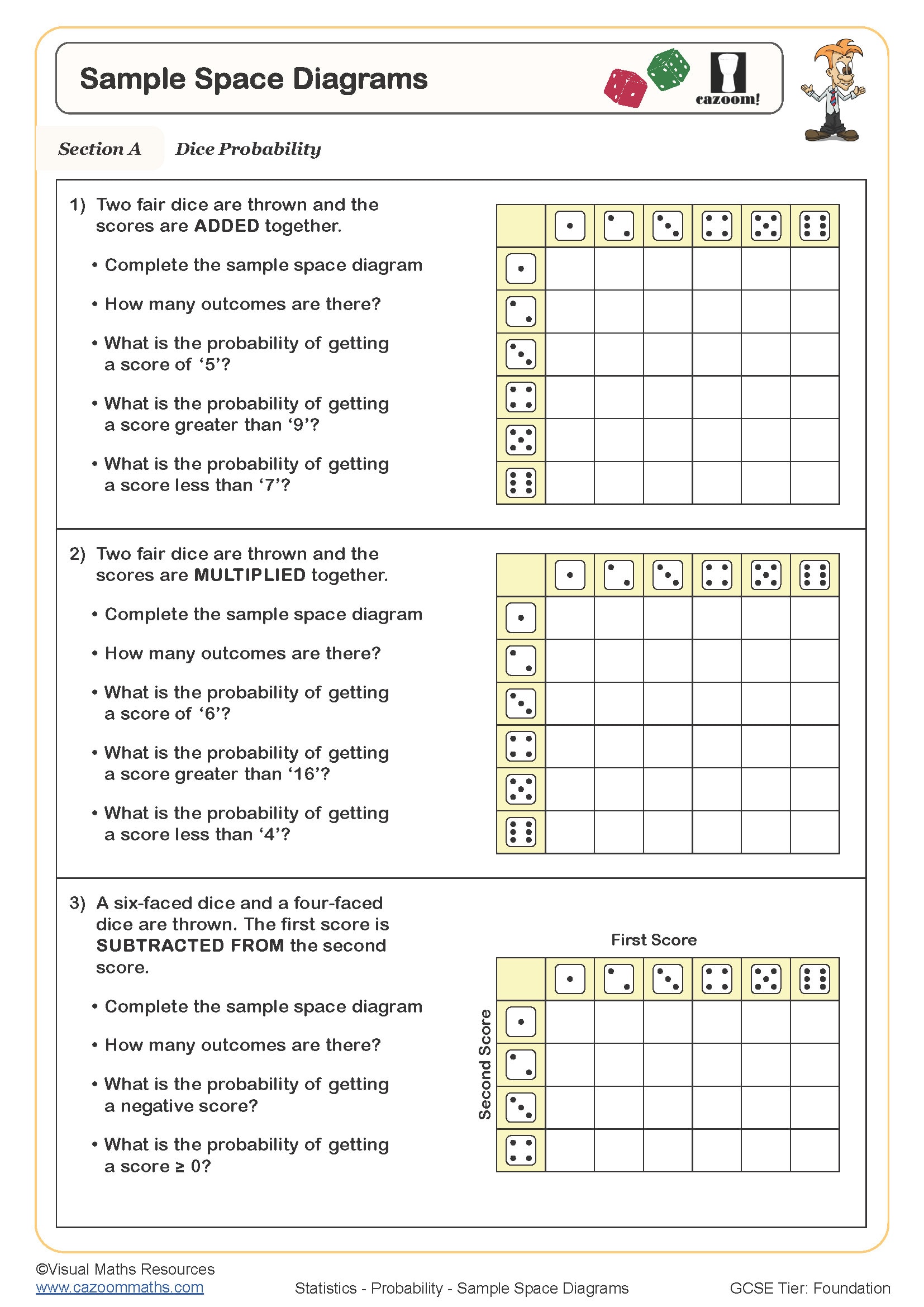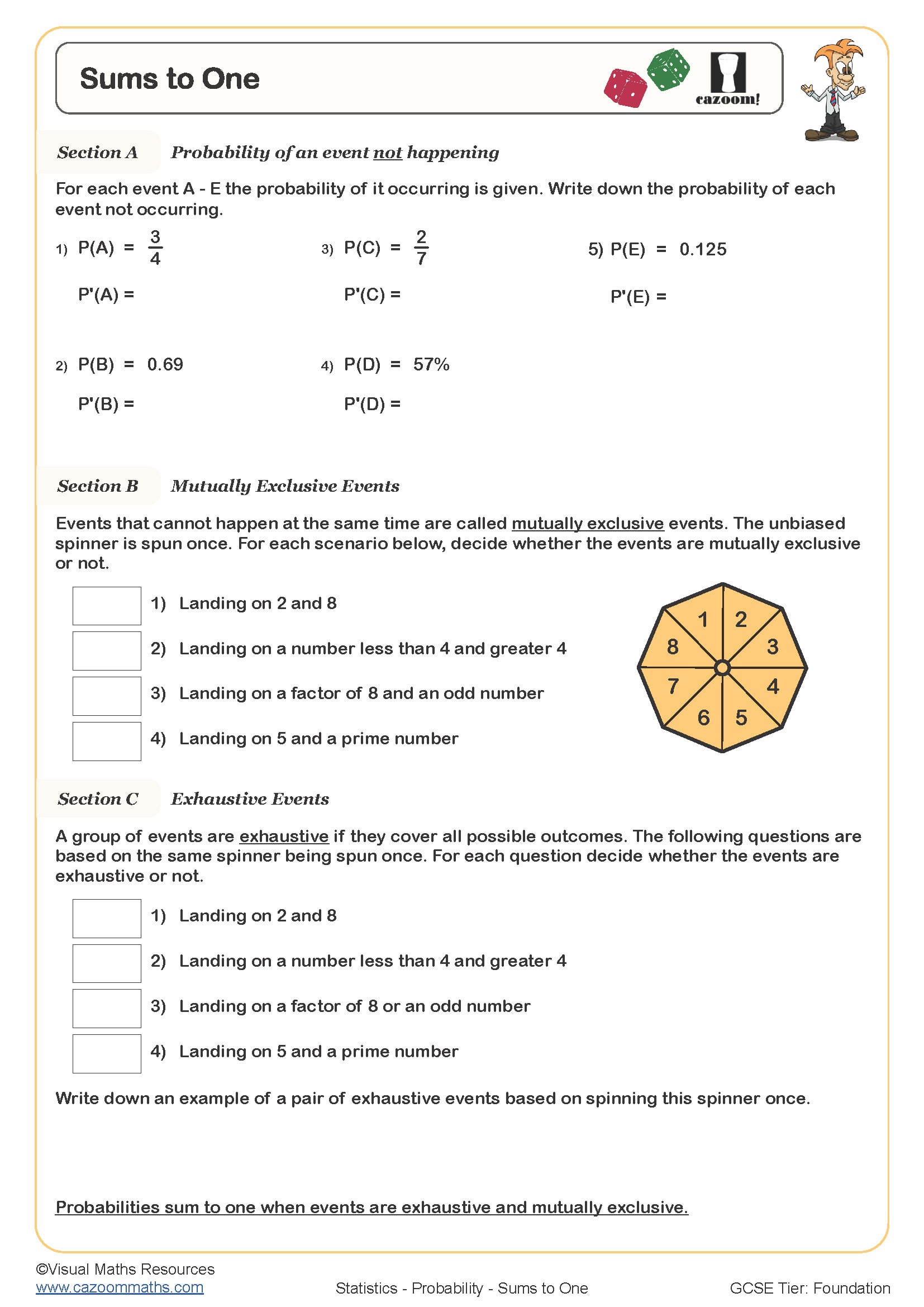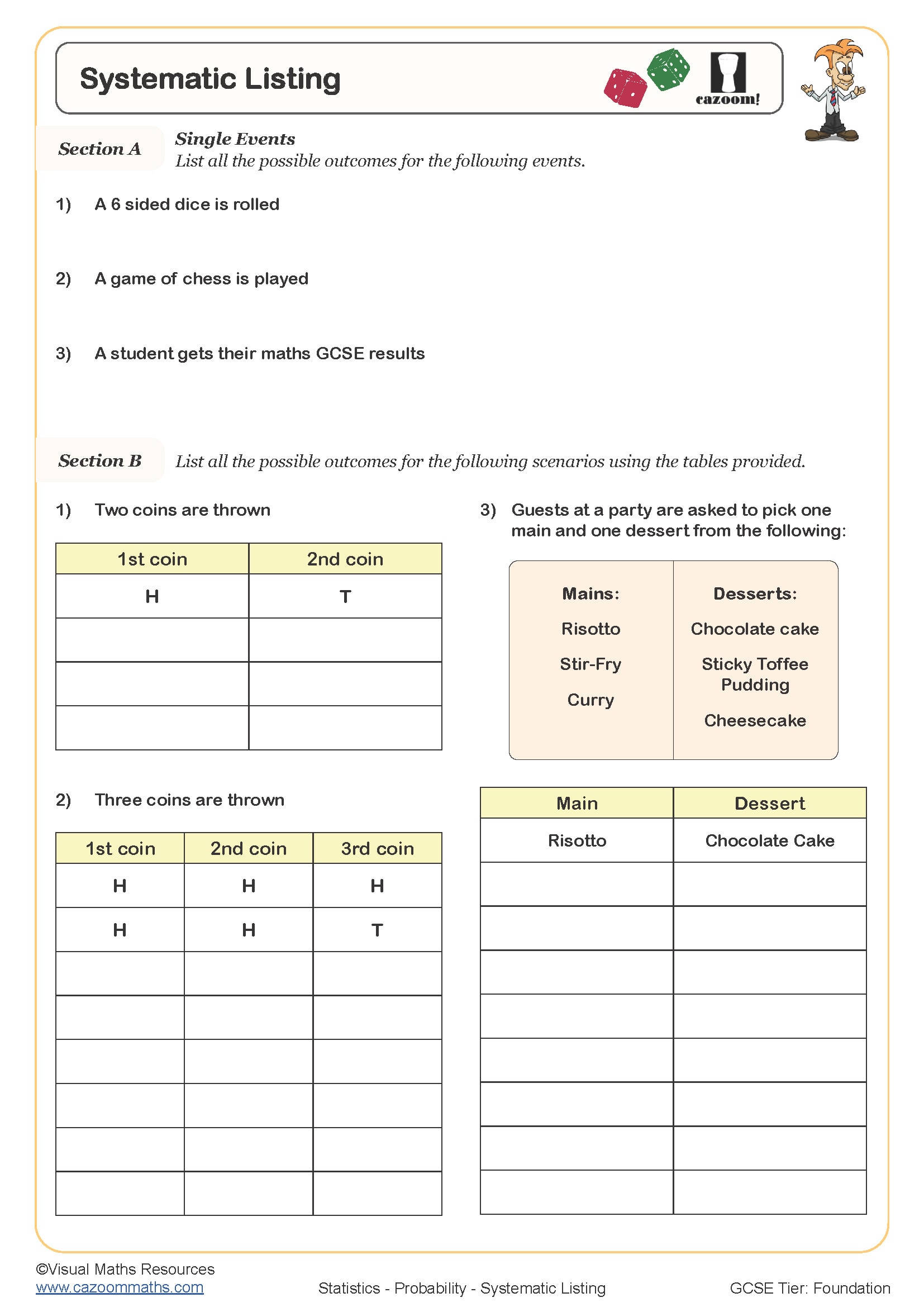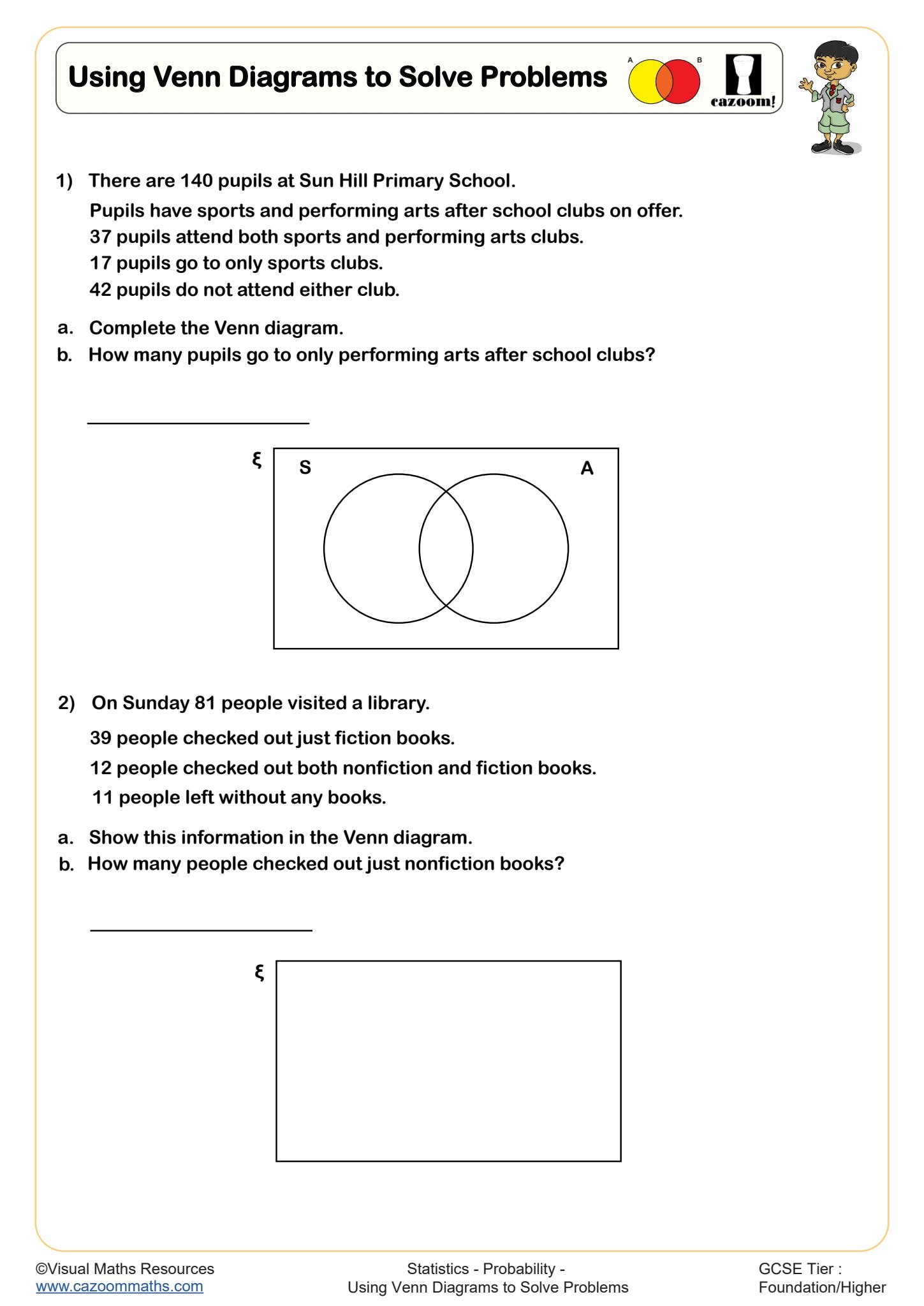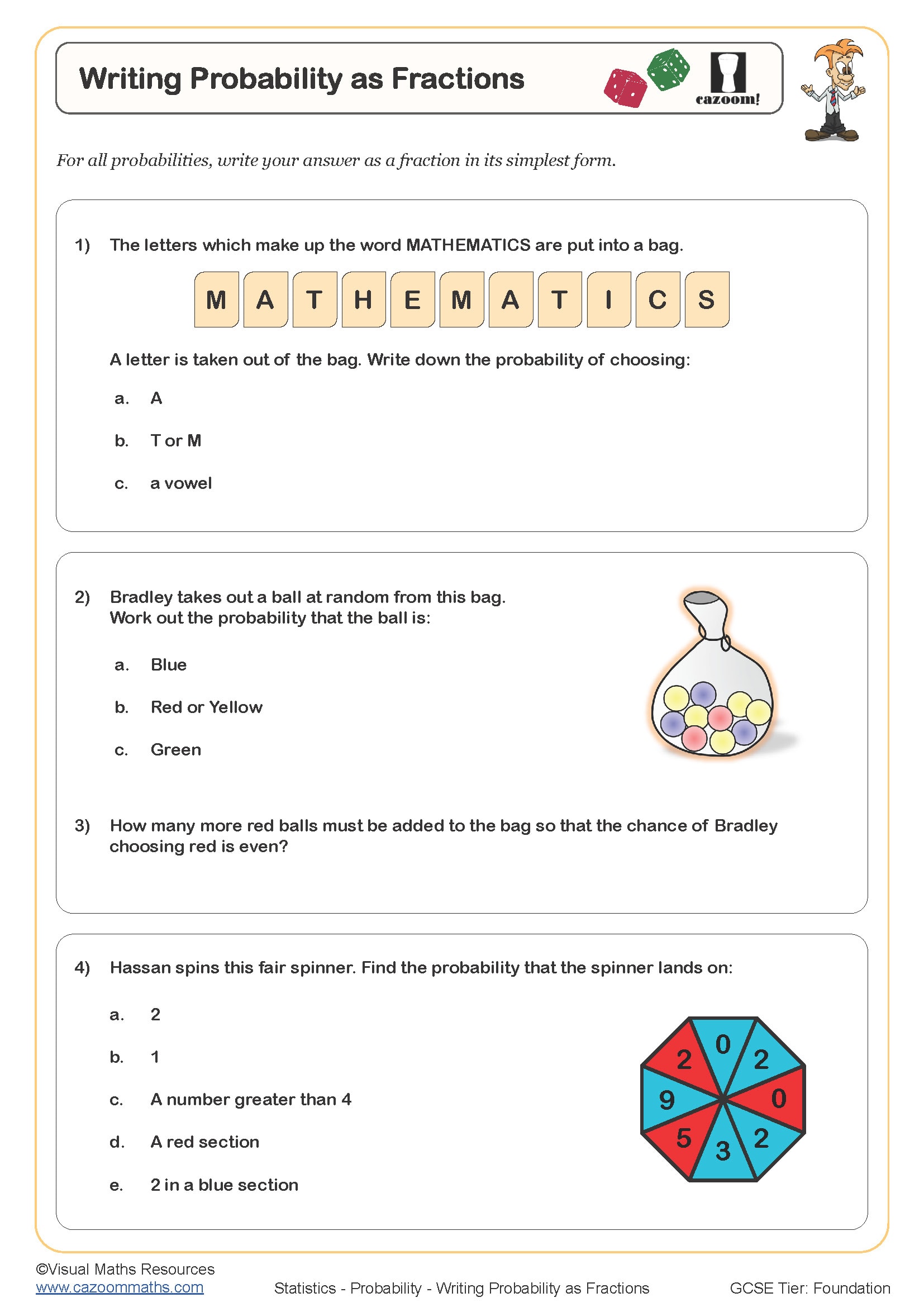Year 8 Probability Worksheets
What Makes Year 8 Statistics Worksheets PDFs Different From Regular Practice Sheets?
Working through structured probability exercises develops the logical reasoning Year 8 students need for interpreting data and making informed decisions. The worksheets provide appropriate scaffolding for Year 7 students to learn chance through their gradual difficulty progression, which avoids overwhelming students while keeping the challenges suitable for their level. Students who regularly practise with these materials develop stronger intuition about likelihood, enabling them to tackle unfamiliar problems systematically. The methodical approach creates essential foundations for GCSE statistics because probability serves as a fundamental element in hypothesis testing and data analysis. The progression from simple coin tosses to multi-stage events mirrors how mathematical thinking evolves from concrete to abstract reasoning.
Specific learning benefits include:
• Master theoretical probability calculations
• Strengthens experimental result interpretation
• Develops systematic recording methods
• Improves fraction-decimal-percentage conversions
• Builds probability scale understanding
• Enhances logical reasoning skills
• Prepares groundwork for tree diagrams
Classroom-Ready Year 8 Probability Worksheet Topics for Lessons, Homework, and Revision
These probability resources follow pedagogical best practice by progressing from concrete examples using everyday situations to pictorial representations with spinners and dice, before advancing to abstract calculations. Each worksheet includes fully worked solutions showing every calculation step, helping students understand the reasoning behind probability methods rather than memorising formulas. The materials address common misconceptions about randomness and chance whilst developing mathematical fluency through varied contexts that maintain engagement.
The worksheets in this collection include:
• Introduction to Probability — understanding basic chance concepts and probability language
• Probability Scale A — placing events on scales from impossible to certain
• Probability Scale B — comparing the likelihood of multiple events using numerical scales
• Single Event Probability — calculating chances using fractions, decimals and percentages
• Experimental Probability — recording outcomes and calculating relative frequency
• Expected Outcomes — predicting results based on theoretical probability
• Two-Way Tables — organising data to find conditional probabilities
• Sample Space Diagrams — systematic listing of all possible outcomes
• Tree Diagrams Introduction — representing two-stage probability events visually
• Combined Events — calculating the probability of multiple outcomes occurring
Traditional Lessons or Worksheets? Why Year 8 Probability Resources Work Best
These ready-to-use resources eliminate preparation time whilst ensuring comprehensive curriculum coverage across different ability levels. The worksheets contain specific learning objectives together with differentiated questions and complete answer keys that include detailed working, which enables teachers to concentrate on delivery instead of resource creation. The visual presentation clarifies abstract concepts without lengthy explanations, making classroom management smoother during independent work sessions. Teachers particularly value the logical progression between topics, which builds complexity gradually to support lower-ability students whilst extending higher achievers. The inclusion of extension questions and cross-curricular links enables flexible lesson planning that responds to individual class needs.
Everyday Maths: Where Year 8 Students Use Probability in Real Life
Understanding probability influences countless decisions students encounter beyond school, from assessing everyday risks to interpreting statistical claims in the media.
• Calculating discount likelihood during seasonal sales events
• Weather forecasting for outdoor activities and sports fixtures
• Gaming strategies in board games and video competitions
• Traffic safety decisions when crossing roads
• Medical screening reliability and health statistics interpretation
• School raffle odds and fundraising event planning
• Sports tactics and team selection strategies
• Social media algorithm predictions and targeted advertising
